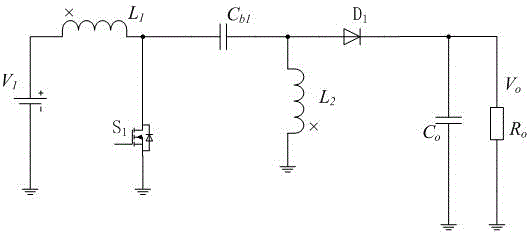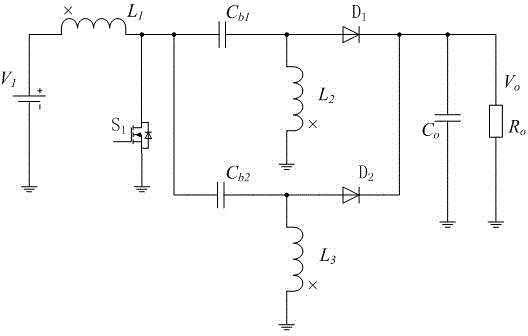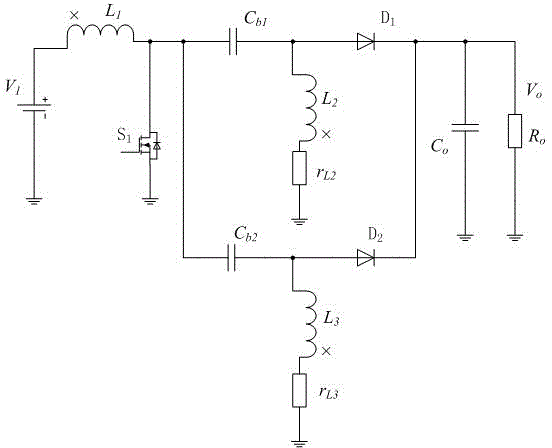SEPIC circuit in parallel structure
A circuit and parallel technology, which is applied in the direction of electrical components, electric variable adjustment, output power conversion devices, etc., can solve the problems of uneven current, aggravated current uneven current, poor reverse recovery characteristics of anti-parallel diodes, etc., to meet the requirements of The effect of outputting large current, improving conversion efficiency and reducing sensitivity
- Summary
- Abstract
- Description
- Claims
- Application Information
AI Technical Summary
Problems solved by technology
Method used
Image
Examples
Embodiment Construction
[0016] The invention will be further described below in conjunction with the accompanying drawings.
[0017] see figure 2 . A SEPIC circuit with a parallel structure according to an embodiment of the present invention includes a first inductor L 1 , switch tube S 1 , the main intermediate circuit and the output capacitor C o . The main intermediate circuit includes a first isolation capacitor C b1 , the first diode D 1 and the second inductance L 2 .
[0018] The first inductance L 1 One end of the DC input voltage V 1 The positive terminal is connected, the first inductor L 1 The other end of the switch tube S 1 The first conduction terminal and the first isolation capacitor C b1 One end of the connection, the first isolation capacitor C b1 The other end of the first diode D 1 The positive pole and the second inductor L 2 Connected at one end, the first diode D 1 the negative terminal of the output capacitor C o One end of the connection, the switch tube S ...
PUM
 Login to View More
Login to View More Abstract
Description
Claims
Application Information
 Login to View More
Login to View More - R&D
- Intellectual Property
- Life Sciences
- Materials
- Tech Scout
- Unparalleled Data Quality
- Higher Quality Content
- 60% Fewer Hallucinations
Browse by: Latest US Patents, China's latest patents, Technical Efficacy Thesaurus, Application Domain, Technology Topic, Popular Technical Reports.
© 2025 PatSnap. All rights reserved.Legal|Privacy policy|Modern Slavery Act Transparency Statement|Sitemap|About US| Contact US: help@patsnap.com



